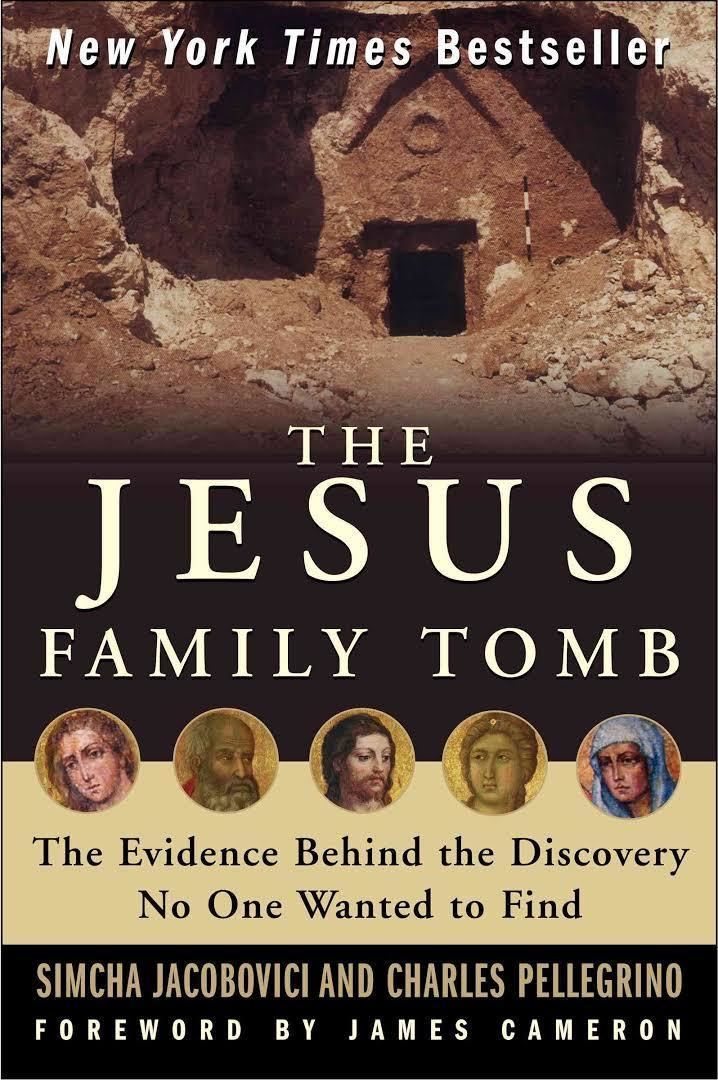Originally published 2007 | ||
 | ||
Similar Charles R Pellegrino books, Christology books | ||
Mysteries of the jesus family tomb
The Jesus Family Tomb: The Discovery, the Investigation, and the Evidence That Could Change History (ISBN 0061192023) is a controversial book by Simcha Jacobovici and Charles R. Pellegrino (with a Foreword by James Cameron) published in February 2007. It tells the story of the discovery of the Talpiot Tomb on Friday March 26, 1980 and makes an argument that it is the tomb of Jesus Christ and his "family."
Contents
The book is a tie-in with the documentary The Lost Tomb of Jesus, which was released on the Discovery Channel in early March 2007.
The Names in the Tomb
The tomb in Talpiot, excavated in 1980 during salvage archaeology, originally contained ten ossuaries - bone boxes for secondary burial. Of the ten, one vanished - presumably stolen - right after it had been catalogued. This may be the James Ossuary the brother of Y'shua, although the such claim is refuted by the professor who oversaw the archaeological work. Of the other nine, six were inscribed with names. As translated in The Lost Tomb of Jesus and The Jesus Family Tomb, they read as follows:
The tenth ossuary
The authors present a case for the ossuary of James son of Joseph, brother of Jesus (Yakov ben Yosef akhui diYeshua). This controversial relic, accepted as legitimate by some, is believed by others in the field as fraudulent. Prominent among those who believe its authenticity is Hershel Shanks, editor of Biblical Archaeology Review. An ongoing forgery trial in Israel has failed to disprove its authenticity. These doubts are the result of the ossuary being unprovenanced - that is, not found in a legitimate excavation. The book presents what the authors purport to be firm scientific evidence that the James ossuary is the missing tenth ossuary from the Talpiot tomb.
The film makers from The Lost Tomb of Jesus had the outside layer of dirt tested against the other 9 ossuaries that were found in the tomb, and the dirt on the outside of the James ossuary was proven to be made up of the same minerals as the other 9 ossuaries. In the documentary they stated that this was nearly impossible if not from the same tomb.
However, Prof. Amos Kloner, who oversaw the archaeological work at Talpiot tomb, refutes the such claim. According to Prof Kloner, the James Ossuary cannot be the missing 10th ossuary because the 10th ossuary had no inscription and had different dimensions. In fact, he has stated that the 10th ossuary was not missing at all.
Controversy
Not only are some of the names on the bone boxes relatively common names, but no writings of Jesus' life, canonical or apocryphal, reported a marriage or children. The authenticity of the nine remaining ossuaries, and of the names inscribed on them, is under no doubt or suspicion. However, the identities of these people are open to much controversy and debate. They are either nine otherwise unknown Jewish people from first-century Jerusalem, or Jesus himself and, presumably, eight members of his family. Recently, some of the scholars quoted in the Discovery Channel documentary have issued strong clarifications, backtracking on some of the central claims made in the film and book. Namely, University of Toronto statistician Professor Andrey Feuerverger, whose conservative statistical analysis claimed that the odds were 600:1 in favor of the tomb being the burial site of Jesus' family, has clarified his opinion, saying that these odds relate to the chances that these particular names would be found in one tomb, and not to the particular identification of individuals in the tomb.
Israeli archaeologist Amos Kloner, who was among the first to examine the tomb when it was first discovered, said the names marked on the coffins were very common at the time. "I don't accept the news that it was used by Jesus or his family", he told the BBC News website. "The documentary filmmakers are using it to sell their film."
Following a symposium at Princeton in January 2008 the media interest in the Talpiot tomb was reignited with most notably Time and CNN devoting extensive coverage, hailing the case as being re-opened. Following the media's portrayal scholars present at the symposium accused Simcha Jacobovici and James Cameron for misleading the media in claiming the symposium re-opened their theory as viable. Several scholars, including significantly several of the archaeologists and epigraphers, who had delivered papers at the symposium issued an open letter of complaint claiming misrepresentation, saying that Jacobovici and Cameron's claims of support from the symposium are "nothing further from the truth".
The list of scholars included:
